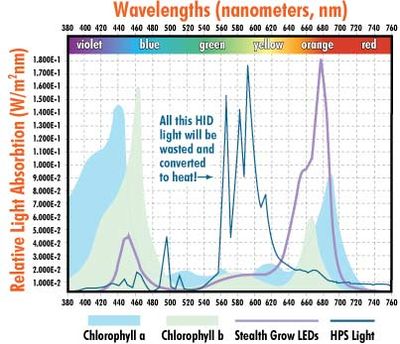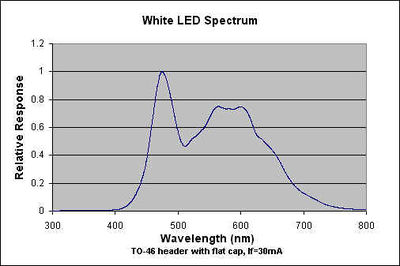Difference between revisions of "Talk:Aquaponics"
| Line 47: | Line 47: | ||
3) The text is as laconic as possible, because many things are to be said and focus must be kept onto the goal - making an aquaponic system, not explaining theoretical matters. | 3) The text is as laconic as possible, because many things are to be said and focus must be kept onto the goal - making an aquaponic system, not explaining theoretical matters. | ||
| + | |||
| + | |||
'''Initial conditions and specifications''': | '''Initial conditions and specifications''': | ||
Revision as of 12:23, 26 December 2013
List of automation needed for a container held aquaponics system:
All readings, data logging, and switching ON/OFF must be available for review/control via a webpage browser, with logging.
Some ideas how it looks like are visible here:
1) This senior citizen runs aquaponics with automation... http://youtu.be/X2wWTadsBDA
2) And younger man, self-made automation: https://www.youtube.com/watch?v=nx-qK7BdZjc
For each Aquaponics System:
1. pH meter in the water.
2. DO /Dissolved oxygen/ meter (in the fish tank) - low reading means something is rotting - dead fish, plant or similar. (and will raise the stink, and kill other stuff in the tank.)
3. Temperature - of the air and of the water in each of the tanks. (This will help track the biological processes.)
4. Time for each cycle in each Grow Bed. (How would we measure this? PGG)
5. Is the water pump running - reading to the voltage and amperage of the pump(s).
6. Speed of the water /if the water is moving, then pump is running and nothing is clogged.
7. Speed in the air /the air fans are running, and everything above said for the water pump - voltage and amperage readings for air fans.
8. light availability for plants (For natural lighting and to determine if the grow lights are operating correctly.)
9. Optical detection in the air conduits between modules to check for bee or other activity.
10. CO2 levels in air and water.
8. Luminosity in the container - are all the lamp emitting light, or some of them are burned out...
9. Relative humidity in the air.
10. Automated feeders for the fish. There is a research /for pity, in Bulgarian/ that automated feeding makes fish growth faster, and this leads to economy in regards to the food used per a kilogram of fish (1.5 kg pellets per 1 kg of fish weight increasement)
Hydroponics (and lighting) subsystem
IMPORTANT NOTE:
1) By no means this is not a scientific work, even if many theoretical issues might be mentioned. The main task is to provide reasonable presumptions of building an aquaponic system, so the text below is just a guiding text. First thing is to run the system (with many redundancies and engineering suprluses), and only then to optimize it.
2) The initial contributor is Misho /Mihail Mateev/, who is not native English, so various spelling, syntax, word-order and other types of errors are expected.
3) The text is as laconic as possible, because many things are to be said and focus must be kept onto the goal - making an aquaponic system, not explaining theoretical matters.
Initial conditions and specifications:
Stage One: Aquaponics System, no limitations Stage Two: Aqiaponics System, 4 by 10 meters, cylindrical shell with R=4m, L=10m, sector of 1 meter is cut off. Stage Three: Aquaponics System, 4 by 20 meters, self-sufficient, subject to additional requirements.
Additional Requirements 1) Self-sufficiency 2) Bee hive at the final stage 3) Some equipment into the floor or under the floor is allowed.
Stage 1.
Aquaponics System constists of several subsystems, the major ones of which are hydroponics subsystem and fish subsystem. Additional there are several smaller subsystems, which serve previously mentioned ones, namely, energy subsystem, sensor subsystem, filter subsystem, insect subsystem, air conditioning subsystem, fish food production, seed production, fishling production, seedling production subsystems, etc. Each one of them should be examined in this document.
The style of this paper should be as much informative, fact-based, experience based, theory explained.
Frequently mentioned sources shall be placed at the end of the paper, one-time mentioned facts are quoted underline.
Hydroponics subsystem
There are several types of hydroponics subsystems.
1) Media based (Grow Beds) 2) Deep Water Culture (DWC), also called Floating Raft (FR) 3) Nutrient Film Technique (NFT)
Advantages and disadvantages on each one of them:
(to be added)
My choice is NFT system, combined with Grow Bed as bio-filter (as first filter of a few more).
Hydroponic Subsystem Design
Paul Graham - Project Director at OpenLuna.org has given some specifications on the fish tank for Stage 1, which follows:
Aquarium with dimension of 4 by 3 by 2 steps. Converted to Metric system, these dimensions are roughly 1200 mm by 900 mm by 600 mm /600 mm is height/.
If the water is 100 mm below the edge, then dimensions are 1200 by 900 by 500 mm.
Based on Aquaponics Secrets [2] 1200 plate-sized fish support 5000 NFT lettuces. This means that 1 fish supports approximately 4,2 plants.
Based on highest possible density for grown fish in Aquaponics Made Easy [1], which is 1 fish per 10 liters, first we need to estimate the water volume of the aquarium (also called here Fish Tank (abbreviation: FT)) in order to see how many fish we can have.
The volume of parallelepiped aquarium is most easy calculated, if any dimension is converted to decimeters (a decimeter is one-tenth of a meter), and then they are multiplied. The product is the volume in liters.
So: 1200 mm are 12 dm, 900 mm are 9 dm, 500 mm are 5 dm.
Therefore the volume V of the aquarium is V=12*9*5=540 dm3.
So the count of fish is the quotient of V divided by fish specific volume, in this case, 10 liters, so we have
N(fish)=V(FT)/V(fish) = 540/10 = 54.
So the number of plate-size fish is 54.
For the sake of calculations we may accept the count of fish as 50.
50 fish can support 210 plants (50 fish * 4.2 plants/fish = 210 plants)
The particular conception of proposed hydroponics subsystem is based on the video in Youtube [5].
Typical LED Spectrum:
Sunlight peaks in the blue spectrum at 475 nanometers (nm). This is a shorter wavelength than red light and is used by both plants and algae. As light passes through water the intensity decreases. The shorter wavelength blue light penetrates water better and more quickly than red, which is slower and absorbed more quickly. Chlorophyll, the photosynthetic pigment used by plants traps blue and red light but is more efficient with red light at 650 – 675nm. Blue is used at the same rate as red because it is more available for reasons mentioned above.
For green plants the lighting peaks that are most important:
Chlorophyll-a: 430nm/662nm
Chlorophyll-b: 453nm/642nm
Carotenoids: 449nm/475nm
Red pigmented plants use more light in the blue area of the spectrum.
Typical Cool White LED Response, compared to human eye response:
Warm White spectrum compared to Cool White spectrum (LED):
Emission spectrum of a phophor-based white LED manufactured by Nichia Corporation (Anan, Tokushima, Japan):
Spectrum of sunlight reaching the Earth compared to chlorofyll spectrum:
Photosynthetic Action Spectrum:
All fluorescent and MH bulbs have a discrete spectrum, whereas sunlight has a continuous spectrum. Discrete spectrum is a result of using a discharge in mercury (and other metal) vapors, with several peaks at different wavelengths, mostly in the ultraviolet range. Phosphors on the bulb convert this radiation into narrow bands of visible light.
All fluorescent and MH bulbs also are very fragile and short-lived. So LED lights, being solid, long-lived, and with continuous spectrum tend to be superior over other current solutions for lighting, especially for extraterrestrial applications.
PAR, MH and LED spectra compared
Waste of energy in HID spectrum
LED spectrum of TO46 with exact positions of wavelengths:
LED spectrum of TO46 with exact positions of wavelengths, overimposed on peaks in wavelength, most desirable for plants.
Sources:
For sources of images, if not mentioned expressively, links are provided into description of the images. One has to click on it to see it.
1) Aquaponics Made Easy: http://www.practicalaquaponics.com/contents/en-us/p19_Aquaponics_Made_Easy_-_The_DVD_-_Everything_you_need_to_know..html
2) Aquaponics Secrets: http://www.practicalaquaponics.com/contents/en-us/p20_Aquaponics_Secrets_-_The_DVD_-_Companion_to_Aquaponics_Made_Easy.html
3)
4)
5) DIY Indoor Vertical Hydroponics System : http://www.youtube.com/watch?v=_fyGORvV850 (playlist is available here: http://www.youtube.com/watch?v=_fyGORvV850&feature=share&list=PL7b6qe-EdhidpeYqGOKMft2_HW1dITkg-)











